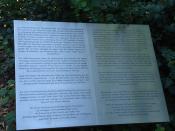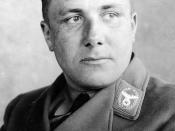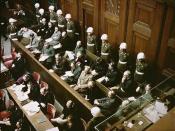The Nuremberg Trials were to many a sign of the world healing after the Second World War. The trials initiated a model of what further international enforcement of justice might be patterned like. To many, the trials indicated that transgression against basic, human values would no longer be tolerated by the world. A process would now be in place to hold people accountable for crimes against humanity.
The first international war-crimes trials began in November 1945 in Nuremberg, Germany. On December 20, 1945 the Allied Control Council issued Control Law No. 10, establishing the basis for the prosecution of war criminals and similar offenders. This was a huge step in international prosecution. Judge Charles E. Wyzanski Jr. voiced concerns about the hazards of administering international justice without the benefit of a guiding precedent. Nothing of this nature or magnitude had ever been done before. This was particularly concerning since the judiciary panel was to be comprised not of disinterested legal experts, but of political leaders from the very countries against which the defendants were said to have committed the crimes.
Wyzanski warned that if the panel punished the defendants with their feelings versus the facts, that the defendants would not receive a fair trail.
The International Military Tribunal or IMT was set up by the victorious Allies at the end of WWII. The Allies consisted of the U.S., France, Great Britain and the Soviet Union. Prosecutors from those four countries indicted a total of 22 Nazi German officials on three basic charges. The charges were committing war crimes and committing crimes against humanity. Also indicted were various German organizations and businesses that the Allies charged with aiding the Nazi war effort. They also charged that the Nazis were responsible for over the previous 10 years were the murder of...


